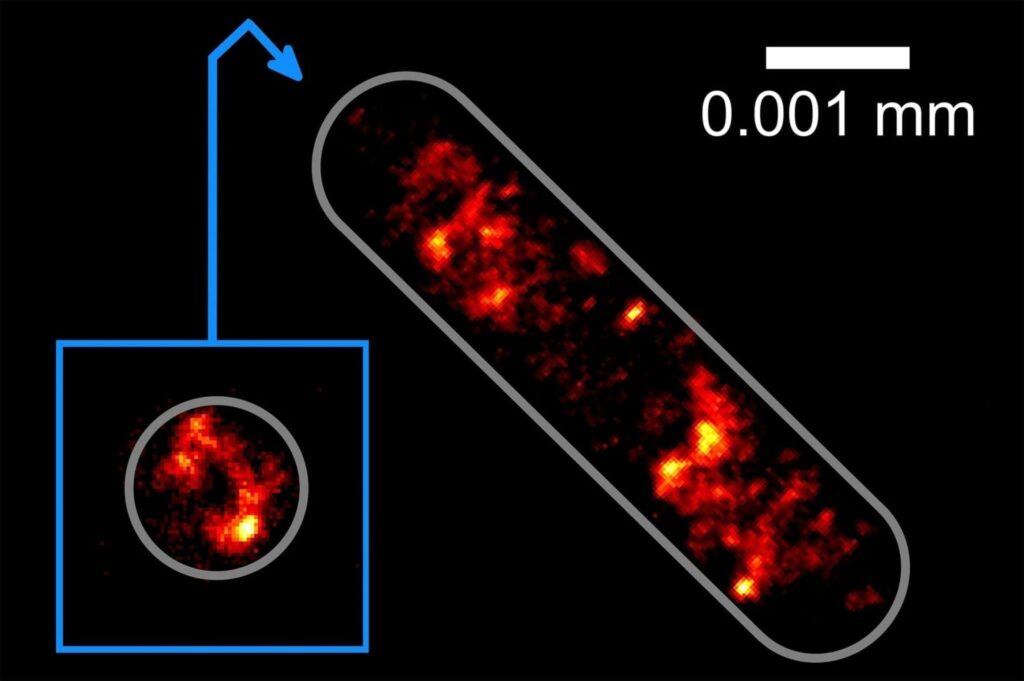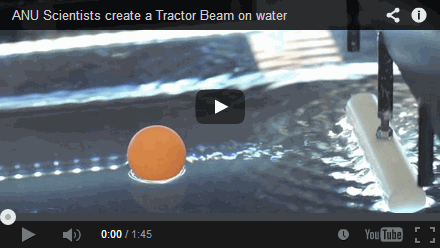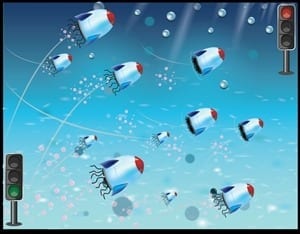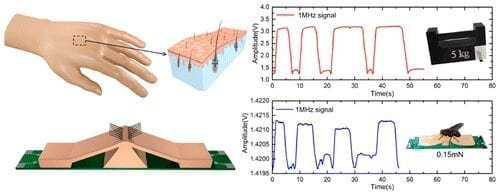
Up to now, if scientists wanted to study blood cells, algae, or bacteria under the microscope, they had to mount these cells on a substrate such as a glass slide. Physicists at Bielefeld and Frankfurt Universities have developed a method that traps biological cells with a laser beam enabling them to study them at very high resolutions. In science fiction books and films, the principle is known as the ‘tractor beam’. Using this procedure, the physicists have obtained superresolution images of the DNA in single bacteria.
One of the problems facing researchers who want to examine biological cells microscopically is that any preparatory treatment will change the cells. Many bacteria prefer to be able to swim freely in solution. Blood cells are similar: They are continuously in rapid flow, and do not remain on surfaces. Indeed, if they adhere to a surface, this changes their structure and they die.
‘Our new method enables us to take cells that cannot be anchored on surfaces and then use an optical trap to study them at a very high resolution. The cells are held in place by a kind of optical tractor beam. The principle underlying this laser beam is similar to the concept to be found in the television series “Star Trek”,’ says Professor Dr. Thomas Huser. He is the head of the Biomolecular Photonics Research Group in the Faculty of Physics. ‘What’s special is that the samples are not only immobilized without a substrate but can also be turned and rotated. The laser beam functions as an extended hand for making microscopically small adjustments.’
The Bielefeld physicists have further developed the procedure for use in superresolution fluorescence microscopy. This is considered to be a key technology in biology and biomedicine because it delivers the first way to study biological processes in living cells at a high scale – something that was previously only possible with electron microscopy. To obtain images with such microscopes, researchers add fluorescent probes to the cells they wish to study, and these will then light up when a laser beam is directed towards them. A sensor can then be used to record this fluorescent radiation so that researchers can even gain three-dimensional images of the cells.
In their new method, the Bielefeld researchers use a second laser beam as an optical trap so that the cells float under the microscope and can be moved at will. ‘The laser beam is very intensive but invisible to the naked eye because it uses infrared light,’ says Robin Diekmann, a member of the Biomolecular Photonics Research Group. ‘When this laser beam is directed towards a cell, forces develop within the cell that hold it within the focus of the beam,’ says Diekmann. Using their new method, the Bielefeld physicists have succeeded in holding and rotating bacterial cells in such a way that they can obtain images of the cells from several sides. Thanks to the rotation, the researchers can study the three-dimensional structure of the DNA at a resolution of circa 0.0001 millimetres.
Professor Huser and his team want to further modify the method so that it will enable them to observe the interplay between living cells. They would then be able to study, for example, how germs penetrate cells.
Learn more: Optical tractor beam traps bacteria
[osd_subscribe categories=’tractor-beam-2′ placeholder=’Email Address’ button_text=’Subscribe Now for any new posts on the topic “TRACTOR BEAM”‘]
Receive an email update when we add a new TRACTOR BEAM article.
The Latest on: Optical tractor beam
[google_news title=”” keyword=”optical tractor beam” num_posts=”10″ blurb_length=”0″ show_thumb=”left”]
via Google News
The Latest on: Optical tractor beam
- Physicists create optical component for 6Gon May 16, 2024 at 9:24 am
A joint team of physicists from Skoltech, MIPT, and ITMO developed an optical component that helps manage the properties of a terahertz beam and split it into several channels. The new device can be ...
- Propagating dimensions of light: Deforming versatile non-diffractive beams along the optical trajectoryon April 8, 2024 at 8:11 am
More information: Tianyue Li et al, Spin‐Selective Trifunctional Metasurfaces for Deforming Versatile Nondiffractive Beams along the Optical Trajectory, Laser & Photonics Reviews (2024).
- UK first: microscope uses tractor beams to peer inside cellson October 20, 2023 at 11:42 am
Bessel beams are already used in science as optical tweezers — highly focused laser beams to provide an attractive or repulsive force. They are even being studied for use as tractor beams, an ...
- Scientists Experimenting With Actual Tractor Beam to Clean Up Space Junkon June 3, 2023 at 7:46 am
A team of engineers is working on a real life "tractor beam," a staple device of spacefaring sci-fi that can push and pull objects at a distance without making contact. Tantalizingly, their early ...
- Sonos Beam (Gen 2) Soundbaron April 20, 2023 at 10:39 am
Sound quality: Sonos's Beam (Gen 2) Very Good overall sound quality ... There was no significant difference in sound quality between the HDMI, optical, and WiFi inputs. Dolby Atmos program ...
- Beam Steerers Informationon February 11, 2018 at 6:48 am
The steering principle is based on electronically controlling the optical components that adjust the propagation angle of a laser beam. Optical tools that accommodate a broad range of angles for ...
- Beam Expanders Informationon February 8, 2018 at 12:48 pm
Beam expanders are optical lens assemblies that are used to increase the diameter of a laser beam or other light beam. There are two types of products: Kepler and Galileo. Kepler beam expanders, or ...
- tractor beamon January 4, 2017 at 4:00 pm
Don’t blame us for the click-baity titles in the source articles about this handheld “acoustic tractor beam”. You can see why the popular press tarted this one up a bit, even at the risk of ...
- Optical Science of Vector Beams andNano-Imagingon December 11, 2014 at 11:43 pm
are one of the state-of the-art laser beams. Our goal is to exploit a new fi eld of optical science by systematic inves-tigation of behavior of light around a focal region, where in-novative and ...
via Bing News












